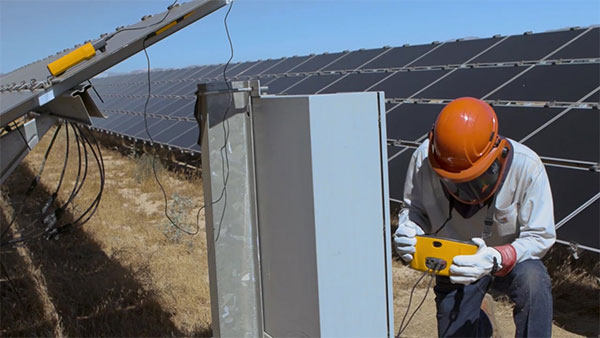Best practice and financial incentives are on offer for the manufacturing and industry sector to create clean energy apprenticeship programs.
By Nicholas Wyman, CEO, IWSI America
Manufacturing and industry sector employers must be part of the U.S. quest to achieve net-zero carbon emissions by 2050, but perhaps in a different way than you think.
Employers in the clean energy sector have yet to take to Registered Apprenticeship Programs in great numbers. That’s despite such programs benefitting employers by offering a path to developing a skilled workforce, improving productivity, reducing turnover, customizing training, and helping to ensure diversity.
Could your business link in with one of the many ways clean, green energy is produced? Solar (onshore or offshore), hydro (such as wave energy), waste, biofuels, or geothermal are all possibilities. The International Energy Agency cites these sources as helping minimize emissions in buildings, transport, and across industries.
Actually, harnessing more renewable energy is a more immediate goal of the U.S. government. It wants to ensure the net-zero emissions goal for energy generation happens by 2035. That’s just 12 years from now.
Manufacturers need to support these audacious climate goals. And supply chain opportunities will continue to emerge in manufacturing, materials, and components, particularly for the solar sector.
Already four in 10 total energy jobs are in the clean energy sector. How do manufacturers and industry employers help boost that number and why should they?
Private investment in clean energy and manufacturing is currently $270 billion USD in the United States. And, there are plenty of incentives from governments available for businesses keen to invest in clean energy, such as in energy investment tax credits. To help meet the challenges in financing clean energy projects within your business, check the advice from , the Director of Clean Technology Finance, part of Mitsubishi HC Capital America.
The money’s there for acquiring new or updated equipment to ‘power up’ clean energy, but the next key investment is in human capital. It’s about an ‘employment shift’, says the World Economic Forum.

Registered Apprenticeship Programs take the best of the centuries-old model of apprenticing and have enough flexibility to ensure they’re future fit. Employers can use 75% of the existing standards for more than 1,000-plus registered apprenticeship occupations. They’re the ones with Department of Labor approval. More occupations are being added to the list, including in clean energy.
As an apprentice intermediary, my organization, the Institute for Workplace Skills and Innovation America (IWSI America), is one of 10 in a new consortium helping meet the skills shortage in the clean energy sector. We assist in developing and supporting more than 2,500 apprenticeships over five years. The 40-year-strong Interstate Renewable Energy Council (IREC) leads the consortium, known as ACE, short for the Apprenticeship in Clean Energy Network. Among members are industry, business, educational providers, governments, and other stakeholders.
The network will help organizations to develop Registered Apprenticeship Programs, or competency-based ones, that target people from underrepresented populations. Apprentices will gain industry-recognized skills and credentials, learning while they’re earning. Their skills will be tailored to what employers want and need.
The solar sector will be the focus of the network’s apprenticeships. Job numbers in the sector jumped by 12,256 workers (3.7%) in the 12 months to 2022. It’s a labor-intensive subsector and has the highest number of jobs in comparison with other power generation subsectors. Roles will span the design, deployment, and maintenance of clean energy across the nation in solar photovoltaic, energy storage, and energy efficiency. That’s where the bounty of supply chain opportunities will continue to emerge in manufacturing, materials, and components.
As I mentioned in an earlier Industry Today article, we can build on the apprenticeships model while rethinking the structures in which current and future staff learn. Do your current training structures present barriers to people from underrepresented communities? Consider People of Color, women, people with disabilities, and veterans. The ACE Network plans to be an exemplar with the goal to help develop and support more than 1,250 apprenticeships (as part of the 2,500+) for such people to ensure the project champions diversity, equity, inclusion, and accessibility.

Whether it’s with the ACE Network or additional organizations, here are key best practices for jump starting registered apprenticeships in clean energy:
There are many ways your manufacturing and industry business can take advantage of clean energy sector opportunities. Networks, resources, funding, and support can help you align with the country’s zero emissions target.

Nicholas Wyman is a future work expert, author, speaker and President of the Institute for Workplace Skills and Innovation (IWSI America), which has a specialty in Clean Energy Workforce Development Initiatives. He has been LinkedIn’s #1 Education Writer of the Year, too, and written an award-winning book, Job U, a practical guide to finding wealth and success by developing the skills companies actually need. Nicholas has an MBA and has studied at Harvard Business School and the Kennedy School of Government and was awarded a Churchill Fellowship.
Scott Ellyson, CEO of East West Manufacturing, brings decades of global manufacturing and supply chain leadership to the conversation. In this episode, he shares practical insights on scaling operations, navigating complexity, and building resilient manufacturing networks in an increasingly connected world.